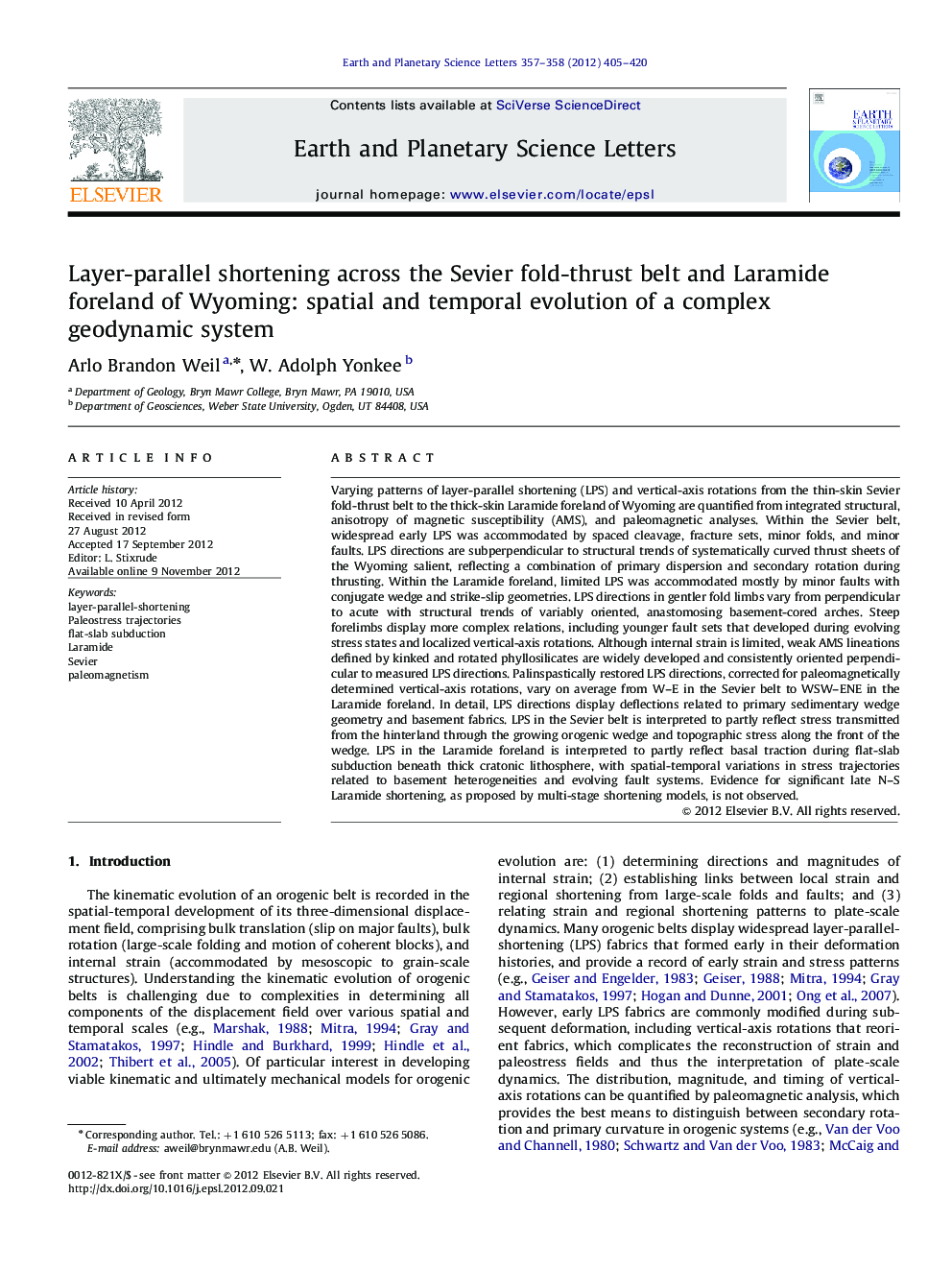| کد مقاله | کد نشریه | سال انتشار | مقاله انگلیسی | نسخه تمام متن |
|---|---|---|---|---|
| 4677312 | 1634794 | 2012 | 16 صفحه PDF | دانلود رایگان |

Varying patterns of layer-parallel shortening (LPS) and vertical-axis rotations from the thin-skin Sevier fold-thrust belt to the thick-skin Laramide foreland of Wyoming are quantified from integrated structural, anisotropy of magnetic susceptibility (AMS), and paleomagnetic analyses. Within the Sevier belt, widespread early LPS was accommodated by spaced cleavage, fracture sets, minor folds, and minor faults. LPS directions are subperpendicular to structural trends of systematically curved thrust sheets of the Wyoming salient, reflecting a combination of primary dispersion and secondary rotation during thrusting. Within the Laramide foreland, limited LPS was accommodated mostly by minor faults with conjugate wedge and strike-slip geometries. LPS directions in gentler fold limbs vary from perpendicular to acute with structural trends of variably oriented, anastomosing basement-cored arches. Steep forelimbs display more complex relations, including younger fault sets that developed during evolving stress states and localized vertical-axis rotations. Although internal strain is limited, weak AMS lineations defined by kinked and rotated phyllosilicates are widely developed and consistently oriented perpendicular to measured LPS directions. Palinspastically restored LPS directions, corrected for paleomagnetically determined vertical-axis rotations, vary on average from W–E in the Sevier belt to WSW–ENE in the Laramide foreland. In detail, LPS directions display deflections related to primary sedimentary wedge geometry and basement fabrics. LPS in the Sevier belt is interpreted to partly reflect stress transmitted from the hinterland through the growing orogenic wedge and topographic stress along the front of the wedge. LPS in the Laramide foreland is interpreted to partly reflect basal traction during flat-slab subduction beneath thick cratonic lithosphere, with spatial-temporal variations in stress trajectories related to basement heterogeneities and evolving fault systems. Evidence for significant late N–S Laramide shortening, as proposed by multi-stage shortening models, is not observed.
Figure optionsDownload high-quality image (488 K)Download as PowerPoint slideHighlights
► Restored Sevier belt LPS directions, corrected for vertical-axis rotation, are W–E.
► Restored Laramide foreland LPS directions are WSW–ENE.
► LPS displays deflections related to sedimentary wedge geometry and basement fabric.
► Sevier LPS reflects combination of hinterland, wedge and topographic stress.
► Laramide LPS reflects flat slab basal traction and basement heterogeneities.
Journal: Earth and Planetary Science Letters - Volumes 357–358, 1 December 2012, Pages 405–420